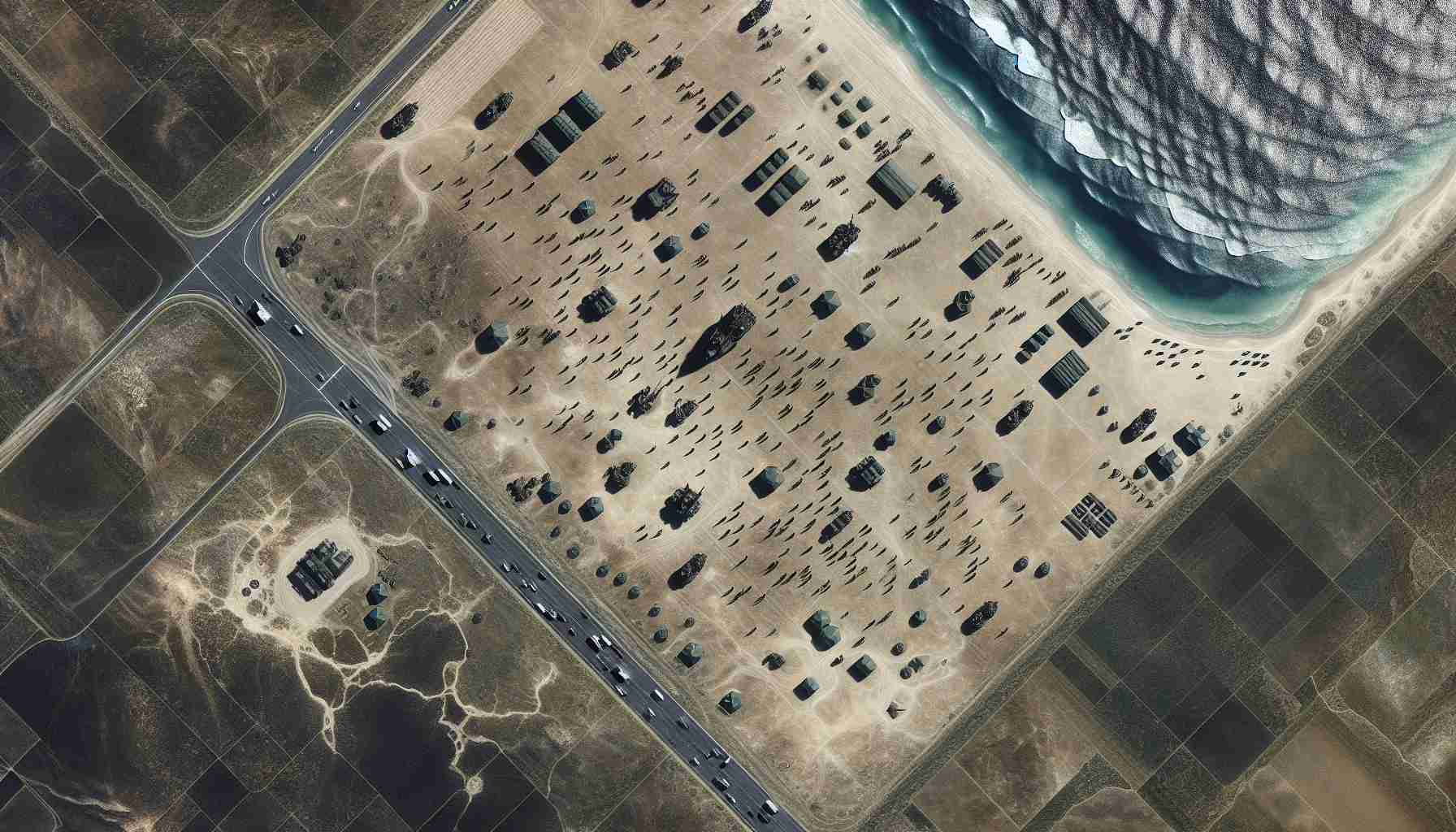
Recent developments indicate North Korea’s increasing involvement in global military affairs. The National Intelligence Service (NIS) has unveiled new satellite imagery, shedding light on the country’s troop deployments to Russia for its ongoing conflict in Ukraine. This intelligence report was shared on a Friday, highlighting the collaborative relationship between North Korea and Russia amidst international tensions.
While two of the three images were sourced from Airbus, a renowned global satellite imagery firm, there remains some ambiguity regarding the third photograph. This lack of attribution has raised questions among analysts and experts, who are keen to understand the complete context of these military maneuvers. The presentation of these images underlines the severity of North Korea’s military engagement with Russia, a situation that may escalate as both nations look to bolster their strategic alliances.
This development emphasizes the shifting dynamics in international relations, particularly how regional conflicts can affect alliances and military strategies. As the situation evolves, further analysis will be crucial to grasp the implications of North Korea’s actions in a broader geopolitical context. Observers worldwide remain vigilant, paying close attention to how these deployments could influence the ongoing war in Ukraine and alter the landscape of power in the region.
New Satellite Imagery Reveals North Korea’s Expanding Military Activities
Recent satellite imagery analysis reveals extensive military movements within North Korea, highlighting the country’s ongoing military modernization and strategic repositioning. New reports confirm troop deployments not only assisting Russia but also increasing military readiness along the demilitarized zone (DMZ) with South Korea. This information is now crucial as it indicates North Korea’s aspirations to augment its military capacity in response to perceived threats from both South Korea and the United States.
What questions arise from these satellite findings?
1. What is the significance of North Korea’s military movements?
North Korea’s troop movements underline its military readiness and willingness to project power in a highly volatile geopolitical environment. This could signify an escalation in provocations against South Korea, as well as increased cooperation with Russia amidst Western sanctions.
2. How does this influence regional security dynamics?
The militarization of North Korea can destabilize the Korean Peninsula, prompting South Korea and the U.S. to amplify their military responses. It can also spur an arms race in the region, as neighboring countries feel compelled to enhance their defense capabilities in light of North Korean aggressiveness.
Key Challenges and Controversies
One of the central challenges regarding this topic is the ambiguity of the intelligence sources. The lack of clarity around certain satellite images raises concerns about accuracy, which could either overstate or understate the true nature of North Korea’s military readiness. Additionally, there is ongoing controversy surrounding the international community’s response; how should major powers, particularly the U.S. and China, navigate their strategies in light of North Korea’s military assertiveness?
Advantages and Disadvantages of Satellite Imagery in Monitoring Military Movements
Advantages:
– Enhanced Awareness: Satellite imagery provides unprecedented visibility into North Korean military activities, allowing for timely assessments and strategic planning.
– International Accountability: The availability of satellite data can promote transparency and deter aggressive actions through global scrutiny.
Disadvantages:
– Misinterpretation Risk: Without proper context, satellite images can lead to misunderstandings regarding military intentions and capabilities.
– Technical Limitations: Imaging technology can sometimes be limited by weather conditions and the ability to capture real-time changes in military deployments.
Conclusion
As the analysis of North Korea’s military movements continues to unfold, understanding the implications of these developments is vital for regional and global stability. Observers must remain assertive in their monitoring efforts, leveraging satellite technology while also being cautious of its limitations.
For further insights into North Korea’s military dynamics and international relations, visit 38 North, a leading source for North Korean analysis.



